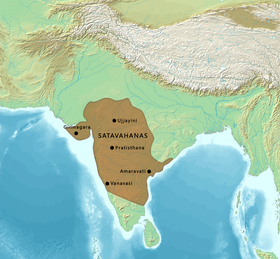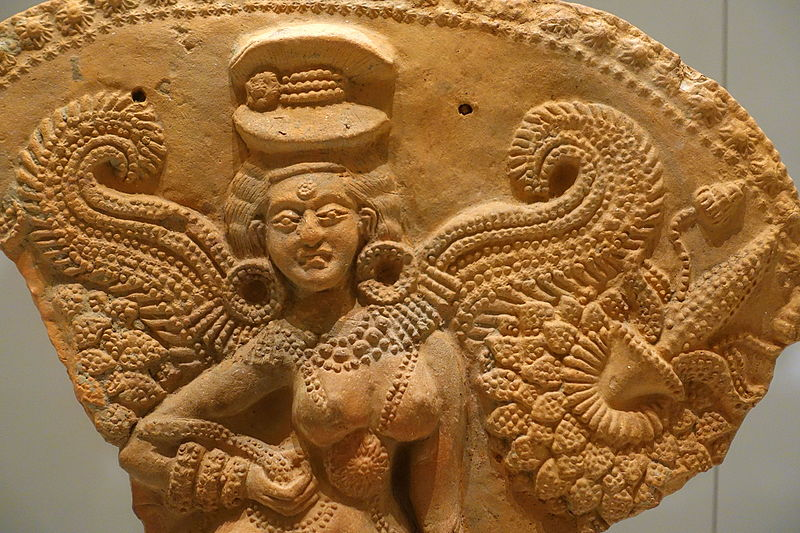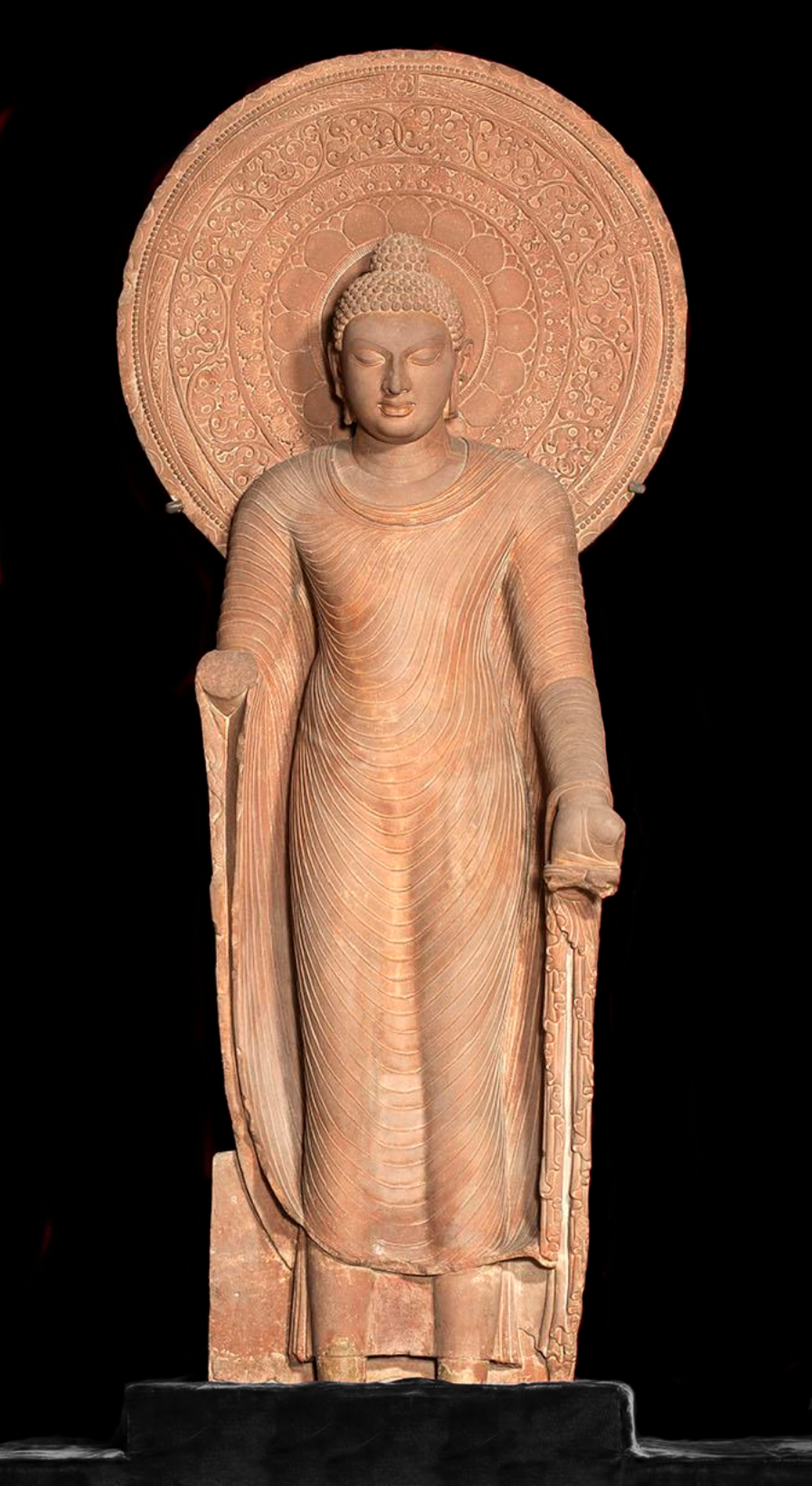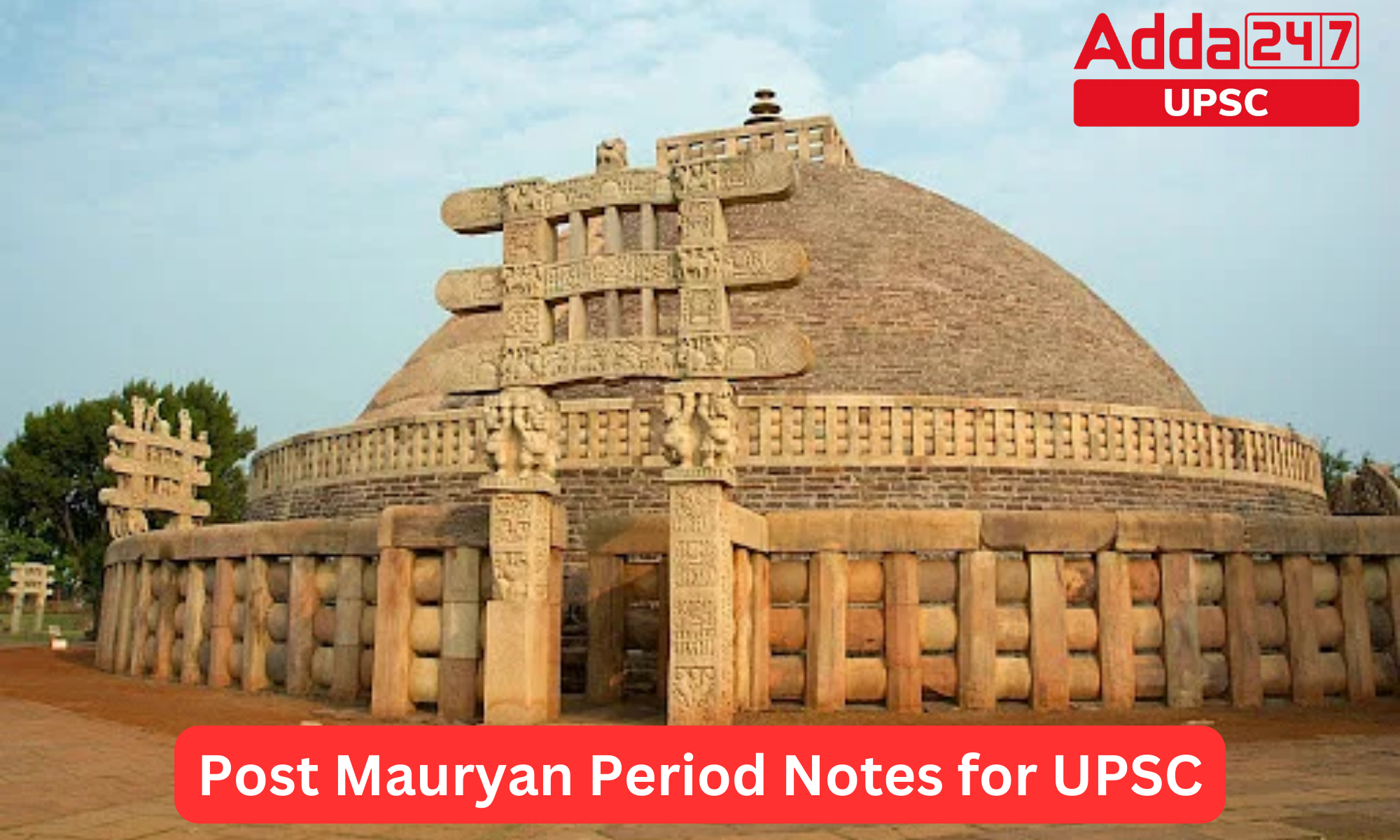Table of Contents
The Post-Mauryan period, from the 3rd century BCE to the 4th century CE, marks a significant transition in ancient Indian history. Following the decline of the Mauryan Empire, various kingdoms emerged, competing for power and influence across the region.
Following the fall of the Mauryan Empire, the northwestern region of India was ruled by the Indo-Greeks, a Greek dynasty from outside the region. They established their capital in Taxila and controlled a vast area that included Punjab, Sindh, and parts of modern-day Afghanistan. The Indo-Greeks are noted for their cultural achievements, promoting Buddhism and spreading Hellenistic art and architecture across India.
Post Mauryan Period in East India
After the Mauryan Empire was defeated in eastern India, the Sunga dynasty emerged to take over the duties of the Empire’s successor. They claimed legitimacy as Brahmins and heirs of the Mauryan legacy, and they ruled from Pataliputra from where they expanded their influence over Magadha and the eastern regions of the country. Their support for Buddhism was notable, resulting in the construction of a number of stupas and monasteries within their territories.
Post Mauryan Period in Deccan Region
Another significant development of the Post-Mauryan period was the emergence of the Satavahanas in the Deccan region of India. The Satavahanas were a powerful dynasty that ruled over a vast area, including modern-day Maharashtra, Andhra Pradesh, and Telangana. They were known for their military prowess and their patronage of Buddhism and Jainism.
Post Mauryan Period: Smaller Kingdoms
During this period, India also witnessed the rise of several smaller kingdoms, such as the Kalingas, the Cholas, and the Pandyas. These kingdoms emerged in various parts of India and were known for their unique cultural and artistic traditions. They also competed with each other for political and economic dominance.
Post Mauryan Period: Cultural Developments
The Post-Mauryan period was also marked by significant cultural and intellectual developments. The Buddhist and Jain traditions flourished during this period, as several new schools of thought emerged. The Buddhist philosopher Nagarjuna, for instance, developed the Madhyamika school of thought, which emphasized the concept of emptiness or shunyata. The Jain philosopher Umasvati, on the other hand, wrote the Tattvartha Sutra, a foundational text of the Jain tradition.
The Post-Mauryan period was a significant era in the history of ancient India. It witnessed the emergence of several new kingdoms and dynasties, as well as significant cultural and intellectual developments. The legacy of this period can still be seen in India today, as it contributed to the shaping of Indian culture, art, and philosophy.
Post Mauryan Empires
After the decline of the Mauryan Empire in the 3rd century BCE, India witnessed the emergence of several regional powers. These post-Mauryan empires were characterized by their regional nature, with each kingdom consolidating its power within a specific geographical area. These empires played a crucial role in shaping the political, social, and cultural landscape of ancient India.
Here are some of the prominent post-Mauryan empires:
Post Mauryan Empires: Shunga Empire (c. 185-73 BCE)
The Shunga Empire was founded by Pushyamitra Shunga, who assassinated the last Mauryan ruler, Brihadratha Maurya. The Shunga dynasty ruled over a large part of northern and central India, including the Magadha region. The Shunga rulers patronized Buddhism and also revived Hinduism, particularly the Brahmanical tradition.

Post Mauryan Empires: Shunga Empire
Post Mauryan Empires: Satavahana Empire (c. 1st century BCE to 3rd century CE)
The Satavahanas were a powerful dynasty that ruled over the Deccan plateau region of southern India. They were known for their patronage of Buddhism and also contributed to the development of Telugu literature. The Satavahanas were involved in extensive trade with the Roman Empire and other regions of Southeast Asia.

Post Mauryan Empires: Satavahana Empire
Post Mauryan Empires: Kushan Empire (c. 1st century to 3rd century CE)
The Kushan Empire was founded by a Central Asian tribe that had settled in the region of modern-day Afghanistan. The Kushans were known for their cultural syncretism, which combined Greek, Persian, and Indian elements. They also played a significant role in the spread of Buddhism to Central Asia and China.

Post Mauryan Empires: Kushan Empire
Post Mauryan Empires: Gupta Empire (c. 4th century to 6th century CE)
The Gupta Empire was one of the most significant post-Mauryan empires, which witnessed a Golden Age in Indian history. The Guptas ruled over a large part of northern India, including the Gangetic plain. They were known for their patronage of art, literature, and science, which saw the development of iconic works such as the Kama Sutra and the concept of zero in mathematics. The Gupta Empire period is often considered a high point in Indian civilization.

Post Mauryan Empires: Gupta Empire
Post Mauryan Empires: Chalukya Empire (c. 6th century to 12th century CE)
The Chalukya Empire was one of the most powerful empires of southern India, which ruled over parts of present-day Karnataka, Andhra Pradesh, and Maharashtra. The Chalukyas were known for their architectural prowess, with iconic structures such as the Badami cave temples and the Aihole temples being constructed during their reign.
Post Mauryan Empires: Chalukya Empire
The post-Mauryan empires played a crucial role in shaping the political and cultural landscape of ancient India. They were characterized by their regional nature, which allowed for the emergence of distinct political, social, and cultural traditions. These empires also played a crucial role in the spread of Buddhism and the development of Indian art, literature, and science, making them a crucial chapter in Indian history.
Post Mauryan Art
After the decline of the Mauryan Empire in the 3rd century BCE, a number of small kingdoms emerged in different parts of India, and each of these kingdoms developed their own unique artistic traditions. This period, which spans from the 3rd century BCE to the 7th century CE, is known as the Post-Mauryan period in Indian art history.
The Post-Mauryan period saw the emergence of a number of new artistic styles and techniques, as well as the continuation of some of the earlier Mauryan artistic traditions. Here are some of the key features of Post-Mauryan art:
Post Mauryan Art: Buddhist Art
Buddhism had become an important religion in India during the Mauryan period, and it continued to flourish during the Post-Mauryan period. Many of the new artistic traditions that emerged during this period were closely linked to the Buddhist religion. Some of the most famous Buddhist sculptures from this period include the standing Buddha statues from the Gandhara region, which show a strong influence of Greek and Roman art.

Post Mauryan Art: Buddhist Art
Post Mauryan Art: Terracotta Art
Terracotta figurines were a popular art form during the Post-Mauryan period. These figurines were often used as votive offerings at Buddhist shrines, and they were also used for household decoration. The terracotta figurines from this period are known for their delicate details and bright colors.

Post Mauryan Art: Terracotta Art
Post Mauryan Art: Stupa Architecture
Stupas are dome-shaped structures that were built to house relics of the Buddha or other important Buddhist figures. Stupa architecture was a major development during the Post-Mauryan period, and some of the most famous stupas from this period include the Great Stupa at Sanchi and the Bharhut Stupa. These stupas were decorated with intricate carvings and sculptures that depicted scenes from the life of the Buddha.

Post Mauryan Art: Stupa Architecture
Post Mauryan Art: Rock-cut Architecture
Rock-cut architecture involves carving structures out of solid rock, and it was a popular technique during the Post-Mauryan period. Some of the most famous rock-cut structures from this period include the Ajanta and Ellora caves, which are decorated with elaborate frescoes and sculptures.

Post Mauryan Art: Rock-cut Architecture
Post Mauryan Art: Gupta Art
The Gupta Empire was a powerful dynasty that ruled over much of India from the 4th to the 6th century CE. During this period, Indian art reached a new level of sophistication and refinement. Gupta art is known for its naturalistic and graceful depictions of human and animal forms, as well as its intricate details and use of vibrant colors.

Post Mauryan Art: Gupta Art
The Post-Mauryan period was a time of great artistic development in India. From Buddhist art to terracotta figurines to stupa and rock-cut architecture, this period saw the emergence of a number of new artistic traditions and techniques that continue to influence Indian art to this day. The Gupta period, in particular, is considered a golden age of Indian art, and its influence can be seen in the art of subsequent periods as well
Post Mauryan Architecture
Post Mauryan Architecture is an important period in Indian architectural history, spanning from around the 3rd century BC to the 12th century AD. This period was characterized by the emergence of several dynasties, each of which contributed significantly to the architectural legacy of India.
The post-Mauryan period saw the emergence of three major architectural styles – the Andhra, the Satavahana, and the Gupta. These styles were characterized by their unique design elements, materials used, and the overall aesthetic they sought to achieve.
Post Mauryan Architecture: Andhra Style of Architecture
The Andhra style of architecture, which emerged in the 3rd century BC, was characterized by the use of brick and stone, as well as stucco decoration. The most famous examples of this style are the Buddhist stupas at Amaravati and Nagarjunakonda, which are adorned with intricate carvings and relief sculptures.
Post Mauryan Architecture: Satavahana Style
The Satavahana style, which emerged in the 1st century BC, was characterized by the use of local materials such as limestone, and the use of elaborate gateways and pillars. The most famous example of this style is the Great Stupa at Sanchi, which features a large hemispherical dome and four gateways, each adorned with intricate carvings and sculptures.
Post Mauryan Architecture: Gupta Style
The Gupta style of architecture, which emerged in the 4th century AD, was characterized by the use of red sandstone and the development of new techniques in stone carving. The most famous examples of this style are the rock-cut temples at Ajanta and Ellora, which are adorned with elaborate carvings and sculptures.
Post Mauryan Architecture: Hindu Temple Architecture
One of the most important developments in post-Mauryan architecture was the emergence of Hindu temple architecture. The earliest known Hindu temple is the Dashavatara Temple at Deogarh, which dates back to the 6th century AD. This temple is characterized by its simple, rectangular design and its use of locally sourced materials such as sandstone and brick.
Over the centuries, Hindu temple architecture evolved to become more elaborate and ornate. The most famous examples of this style are the temples at Khajuraho and Konark, which are adorned with intricate carvings and sculptures depicting scenes from Hindu mythology.
Post Mauryan Architecture: Islamic Architecture
Another important development in post-Mauryan architecture was the emergence of Islamic architecture. The earliest known example of Islamic architecture in India is the Quwwat-ul-Islam Mosque in Delhi, which dates back to the 12th century AD. This mosque is characterized by its use of red sandstone and its elaborate domes and minarets.
In conclusion, post-Mauryan architecture was a period of great innovation and creativity in Indian architectural history. The emergence of new architectural styles, the development of new techniques in stone carving, and the evolution of Hindu and Islamic architecture all contributed to the rich and diverse architectural legacy of India. Today, these architectural marvels continue to inspire and awe visitors from around the world.



 TSPSC Group 1 Question Paper 2024, Downl...
TSPSC Group 1 Question Paper 2024, Downl...
 TSPSC Group 1 Answer key 2024 Out, Downl...
TSPSC Group 1 Answer key 2024 Out, Downl...
 UPSC Prelims 2024 Question Paper, Downlo...
UPSC Prelims 2024 Question Paper, Downlo...





